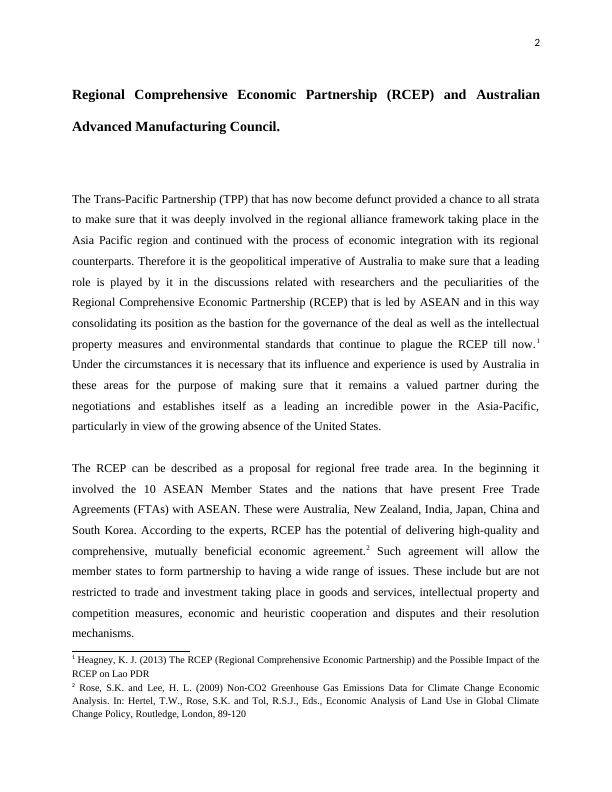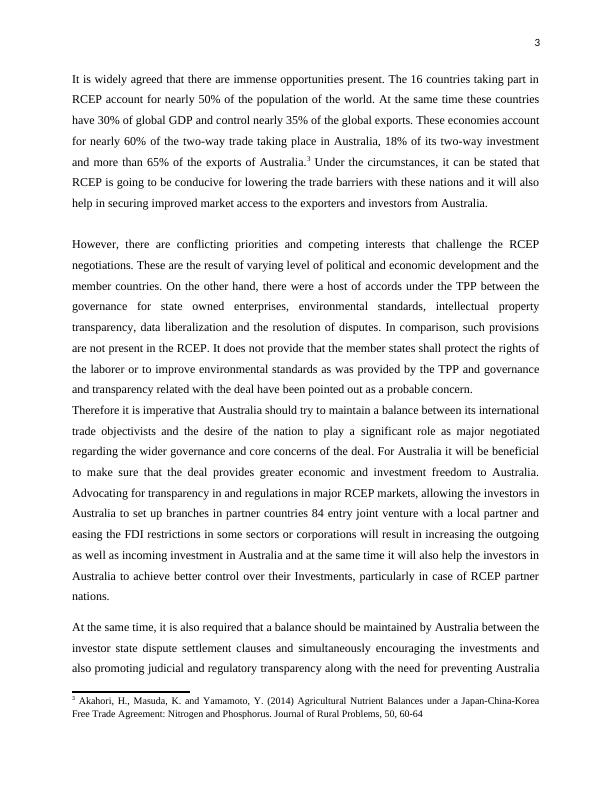Regional Comprehensive Economic Partnership (RCEP): Australia's Role and Opportunities
Write a legal brief on the implications of establishing a comprehensive agreement between Australia and the European Union in the pharmaceutical industry, and another legal brief on the implications of establishing a comprehensive agreement between Australia and Indonesia in the education sector.
Added on 2023-04-25
About This Document
In this report we will discuss about regional comprehensive economic partnership and below are the summaries point:-
-
Australia aims to play a leading role in the Regional Comprehensive Economic Partnership (RCEP) negotiations, strengthening its position in the Asia-Pacific region.
-
RCEP is a proposed regional free trade area involving 16 countries, including ASEAN member states and nations with existing free trade agreements.
-
RCEP presents significant opportunities, accounting for a large portion of global population, GDP, exports, and trade with Australia.
Regional Comprehensive Economic Partnership (RCEP): Australia's Role and Opportunities
Write a legal brief on the implications of establishing a comprehensive agreement between Australia and the European Union in the pharmaceutical industry, and another legal brief on the implications of establishing a comprehensive agreement between Australia and Indonesia in the education sector.
Added on 2023-04-25
End of preview
Want to access all the pages? Upload your documents or become a member.



